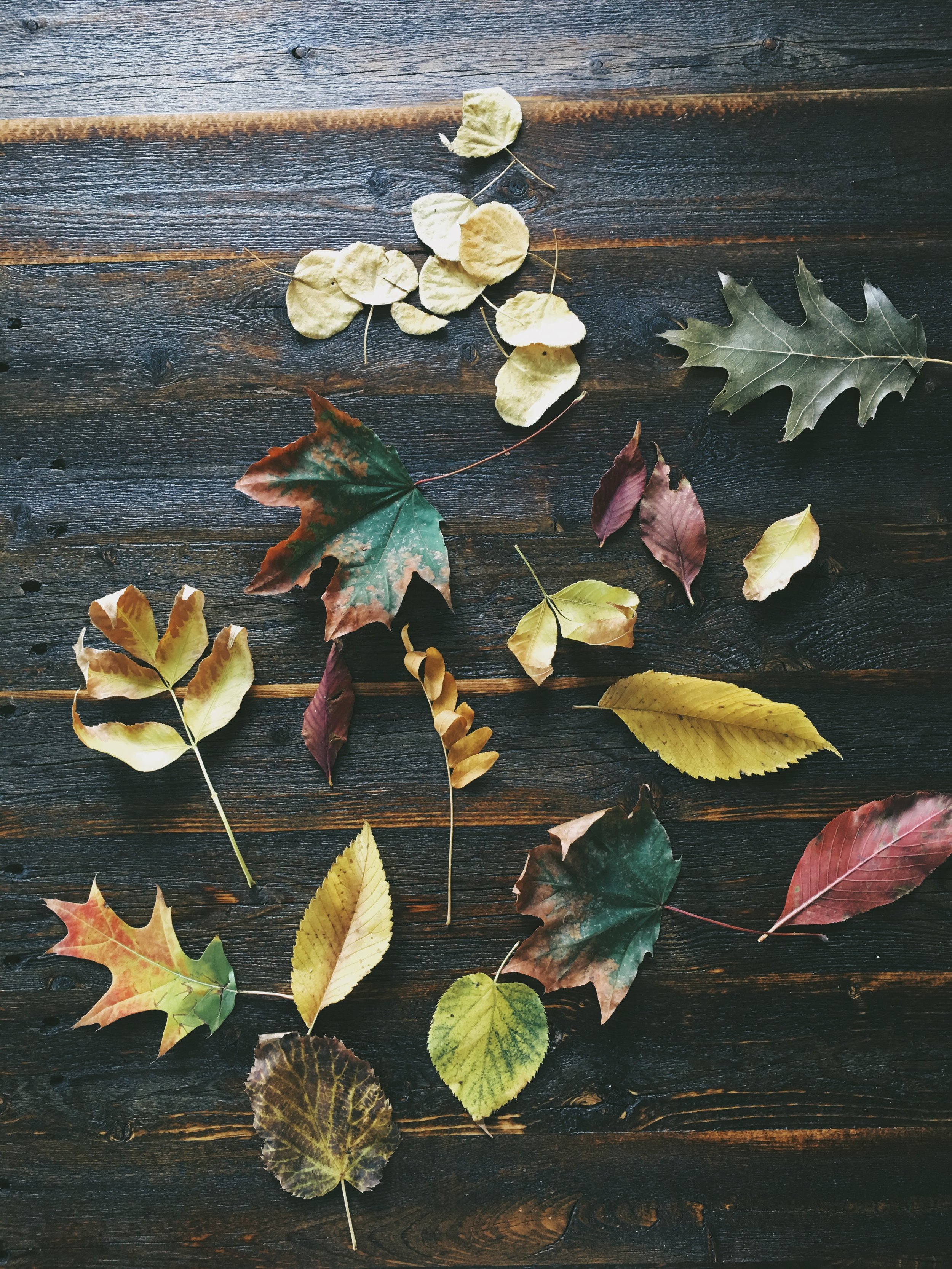Simple Toddler Leaf Study
The world is but a canvas to the imagination. Henry David Thoreau
Well, Ester is almost two, I shouldn't say that, because when I do I feel as though I'm rushing her. She's not two, she's 21 months. The age isn't what matters anyways, it's a number that creates this imaginary boundary of bizarre, arbitrary expectations. Are we paying attention to her development, listening to her needs, noticing her desires, and responding? This matters. Like most children her age, she loves picking up pieces of nature, and exploring their elements. When she was younger she loved pebbles, and she'd put them in her mouth, exploring their taste and texture. Lately she's been looking at leaves, flowers, sticks, and rocks. When we're near a lake or a river we'll practice throwing rocks, or we'll simply move the water with a stick, and splash. Sometimes we'll watch picked flowers float in a current or down a mountain stream. She loves to run, and it's most fun when her hands are clenching a dandelion each.
Fall seems to be winding down here in Colorado, but perhaps it's just beginning where you are. When fall strikes the bright colored leaves are vast, and they are a perfect subject for toddlers to explore. A few weeks back we collected several leaves and brought them home with us. Together, Ester and I shared a study on leaves using paintbrushes, glue, and paper.
Ester's never played with a paintbrush, or paint for that matter. I've been waiting longer than I expected I would. I wanted to take the time considering her engagement, and also her ability. A handful of paintbrushes and several colors of paint would be too stimulating for her. This project was a simple introduction to "painting" meanwhile incorporating the season and the leaves we collected.
Take your little ones out on a chilly fall morning and tell them it's time for a "leaf hunt". Encourage them to find softer leaves (the moisture in the the leaves makes them easier to work with). This project is best done on the same day you collect your leaves.
The materials
- Glue Starch (we used Elmer's School Glue) - Make about 1/2 cup (1/3 glue and 2/3 water) - mix together with a paintbrush, adjust as needed
- Leaves (collected the day of or one day prior ... before they get too dry)
- Paper (the thicker the better)
- Large Paintbrushes
The method
Once the glue solution is created, use a large paintbrush and the solution to paint the leaves to the paper. Model how this works, and assist your children as needed. It's okay if they get the paper too wet, the glue solution will dry clear. Keep the conversation centered around the leaves: colors, texture, shape, etc.
The goal
This project is simple, and perfect for a young learner. While Ester practiced her fine motor skill of holding a paintbrush and applying her "paint" to the leaves, she observed. She observed the leaves, and their colors. She's chose how to arrange the leaves. She was able to observe that leaves have a front and back. After this project her attention to leaves in her surroundings was heightened and she was more inclined to collect leaves and talk about them home. (The following weekend we were in Rocky Mountain NP and she was busy finding aspen leaves, in fact, there are still a few crispy ones dried up in our van.)
Because of Ester's age I setup a space that would allow her freedom of movement, but the materials were provided strategically. I only put out a small amount of glue solution, so if it spilled it wouldn't be much to clean up and we could carry on with the project. I put out all of the leaves, and helped guide her in selecting them if she seemed overwhelmed by the choices.
Once your leaf study paintings are dry you can frame them or simply hang/lean them up as a piece of art for conversation and celebration of fall.
Next Project - Leaf Color Study/Color Matching or Pinecone Painting
Please leave comments or questions below...I would love to know about your little ones and their leaf study :).











